Can Pets Hibernate? Find Out Here!
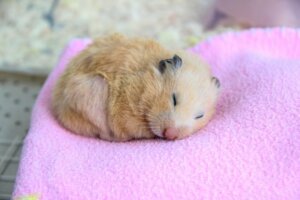

Written and verified by the biologist Samuel Sanchez
Hibernation is a fascinating process that is mostly associated with wild mammals, such as bears, squirrels, and hedgehogs. This biological strategy makes it possible to survive during the coldest months of the year with minimal energy investment, since the animals that practice it hide and reduce their metabolism to basic levels. What you probably didn’t know is that some pets hibernate too!
Although the term hibernation isn’t entirely applicable to many of the animals we’ll talk about in the following list, you’ll see that all of them reduce their metabolic rate to a greater or lesser extent when the cold season arrives. Discover all about them here!
5 pets that hibernate
First, we need to emphasize that the general term that encompasses all strategies of lowering the metabolic rate during the winter is dormancy. This concept encompasses the following biological strategies:
- Hibernation: Hibernation is a state of metabolic depression in which the body reduces its vital activities to a minimum. Body temperature, respiratory rate, and the number of heartbeats per minute drop dramatically. The animal only survives thanks to the energy reserves it has accumulated in spring and summer.
- Brumation: This is equivalent to hibernation, but is a state that occurs in reptiles and amphibians. Reptiles that brumate don’t undergo the drastic changes that mammals do when they hibernate, although they are less active and may refuse food for fairly long periods of time (1 month or more).
- Diapause: This is the term applied to insects and other invertebrates that go into a growth “standstill” during the most inclement months of the year. Various hormones (especially the diapause hormone or DH) encourage this process to take place.
Below we’re going to show you 5 domestic animals that hibernate in captivity, or rather, that practice dormancy in any of its variants. Don’t go away!
1. Hamster (subfamily Cricetinae)
Some species of hamsters (such as the Syrian variety) hibernate in the wild, as they live in temperate environments with low temperatures during the winter. However, they’ve adapted perfectly to the domestic environment and don’t require this break if conditions are suitable. In other words, they’re facultative hibernators and only go into dormancy when required.
House hamsters often adopt typical hibernation behavior when the ambient temperature drops below 20°C. It’s best to avoid this state and place the cage in a warm room, as their health can be compromised (especially if the temperature drop is very extreme).
Keep your furry friend warm during the winter and they won’t need to go through this process.
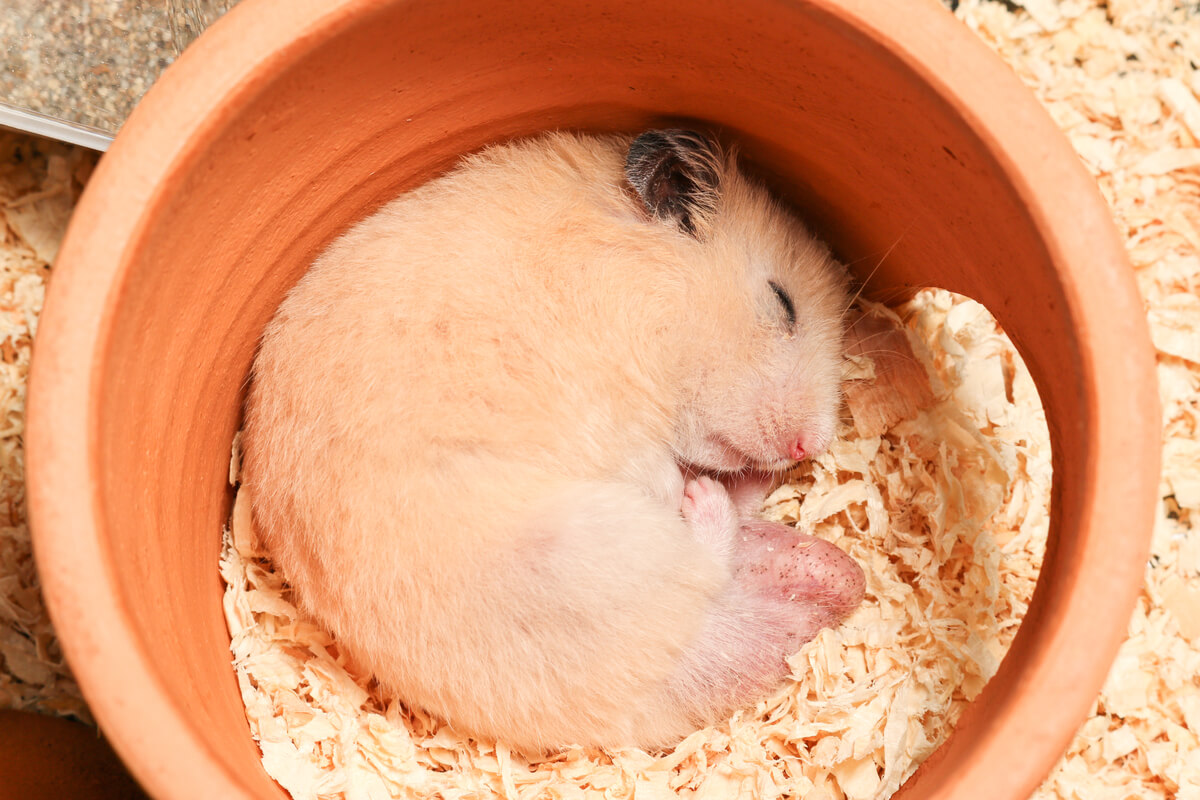
2. African hedgehog (Atelerix albiventris)
The African hedgehog is an exotic pet that has only recently become popular, and, because of this, little is known about many of its requirements. They’re quite active at night and are naturally distributed throughout much of sub-Saharan Africa.
As studies indicate, African hedgehogs adopt a state of prolonged dormancy when environmental conditions are inclement (too cold or too hot). However, they don’t go into absolute hibernation as their relative the European hedgehog (Erinaceus europaeus) does, as the African climate is somewhat more stable and warmer than that of central Europe.
Don’t let your African hedgehog go into dormancy. Keep the ambient temperature of their surroundings between 22 and 27 °C.
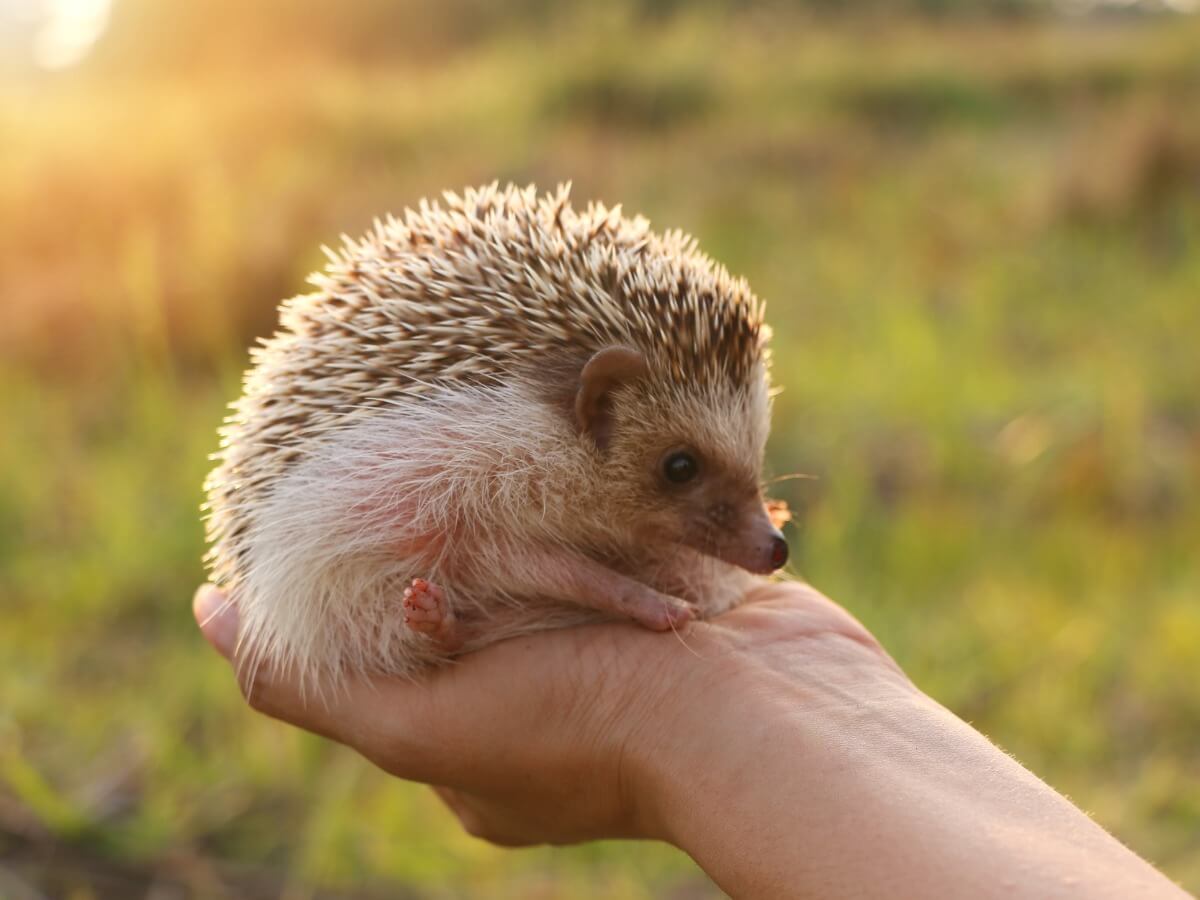
3. Pogona (Pogona vitticeps)
The pogona, or bearded dragon, is a genus of reptiles native to various desert and semi-desert areas in Australia. This region shows quite significant temperature fluctuations, so it isn’t surprising that the species hibernates during the coldest months of the year in the wild.
Despite having a heating blanket and light available, the bearded dragon will most likely retreat to the cooler area of the terrarium during the winter. At this time, it’ll stop eating and be less active in general. Many pogonas do this for the first time in their second year of life, while others never do it at all.
These pets don’t hibernate in the strict sense of the word. Therefore, their activity rate is a little higher than that of a mammal in a similar state.
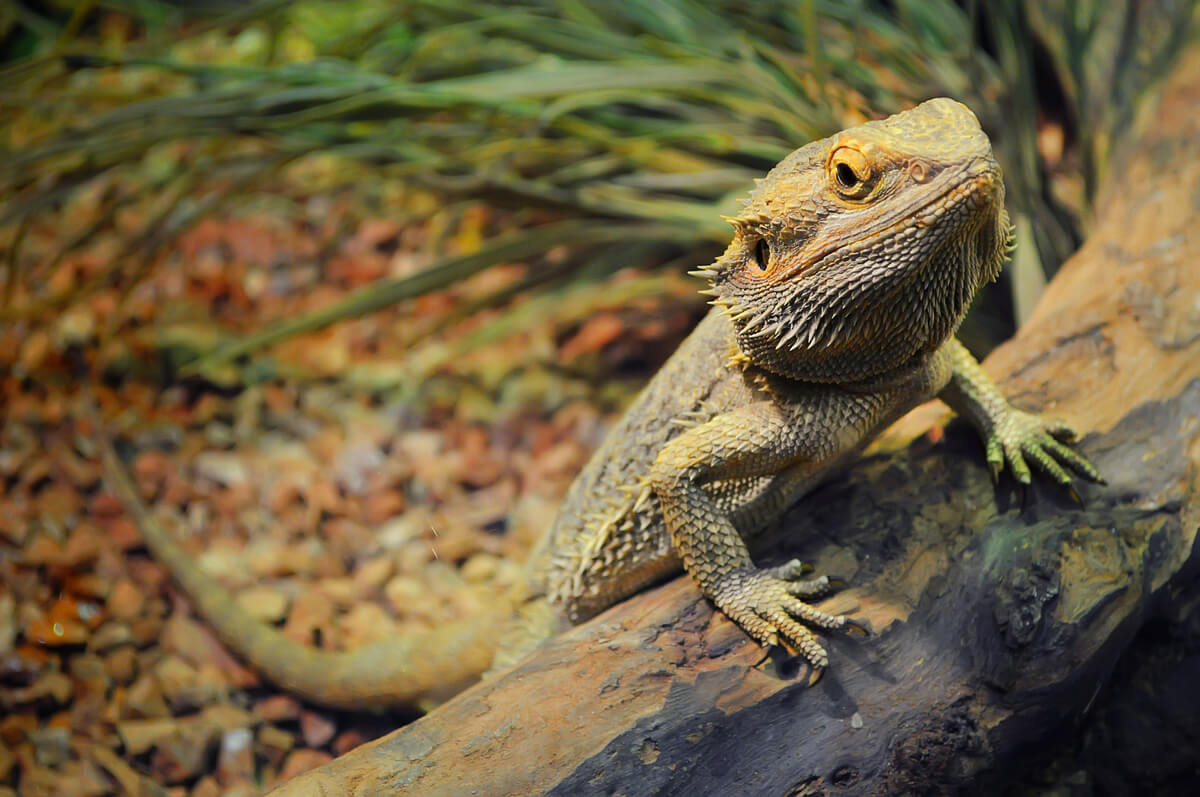
4. Red-eared slider (Trachemys scripta)
As mentioned above, domestic reptiles aren’t considered to be hibernating pets, and, as we explained earlier, brumation is the correct term. However, all red-eared slider tortoises living in an outdoor body of water will go into a very dormant state during the winter if temperatures drop.
Some owners even argue that it’s a good idea to allow red-eared sliders to be exposed to temperatures of about 5°C for 2 to 3 months in order to allow them to hibernate. Many other chelonians (both terrestrial and semi-aquatic) require this metabolic pause in order to develop and reproduce for the rest of the year.
Brumation is very common in turtles, especially in aquatic turtles that live in areas with Mediterranean climates.
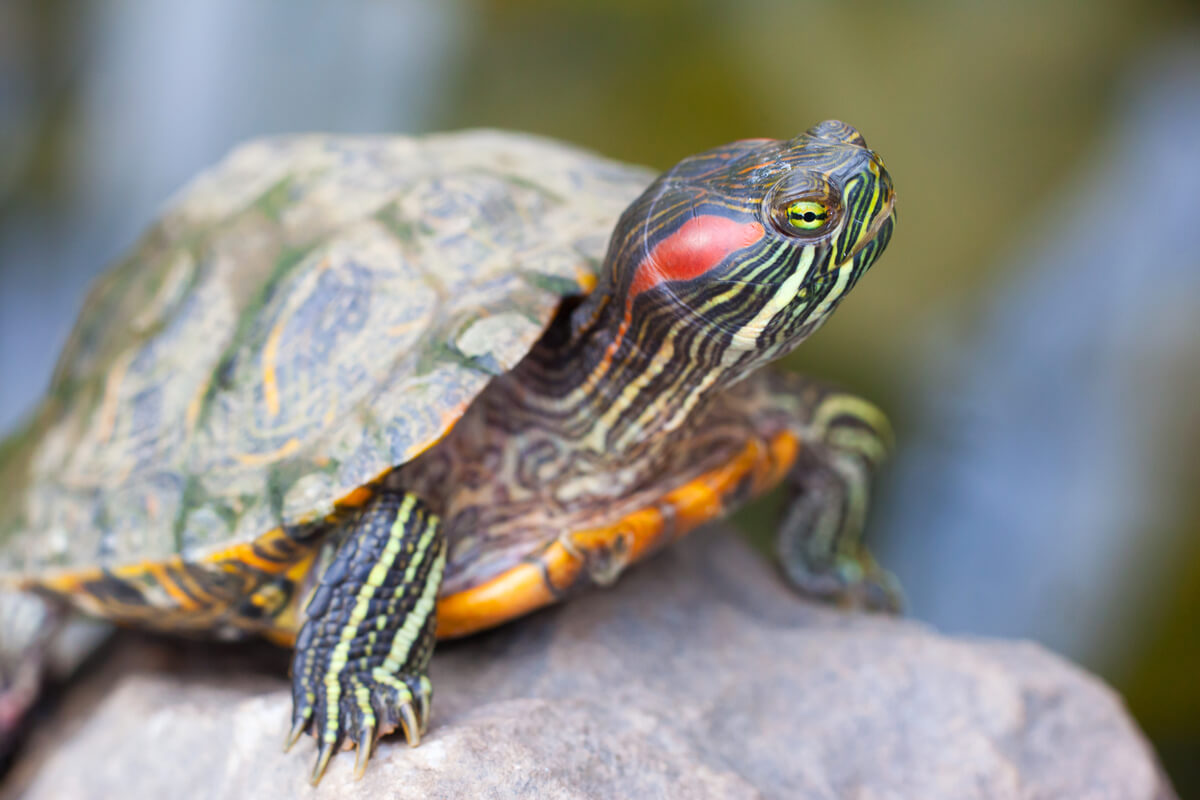
5. Ants (Formicidae family)
It may seem strange to include an insect in this list, but many species of European ants enter diapause during the coldest months of the year. In contrast, exotic ants from Asia and South America (many of the subfamily Ponerinae) don’t usually rest at all, as they live in tropical areas.
During diapause, the queen of the nest stops laying eggs and the workers enter an almost uninterrupted state of lethargy. They group together to conserve heat and hardly forage at all during the day (they drink and eat very little). People who keep Mediterranean climate ants as pets should encourage them to diapause.
Contrary to the previous cases, diapause is obligatory in many species of ants. Keep the nest in a cool place (15-20 °C) and they’ll go into dormancy on their own.
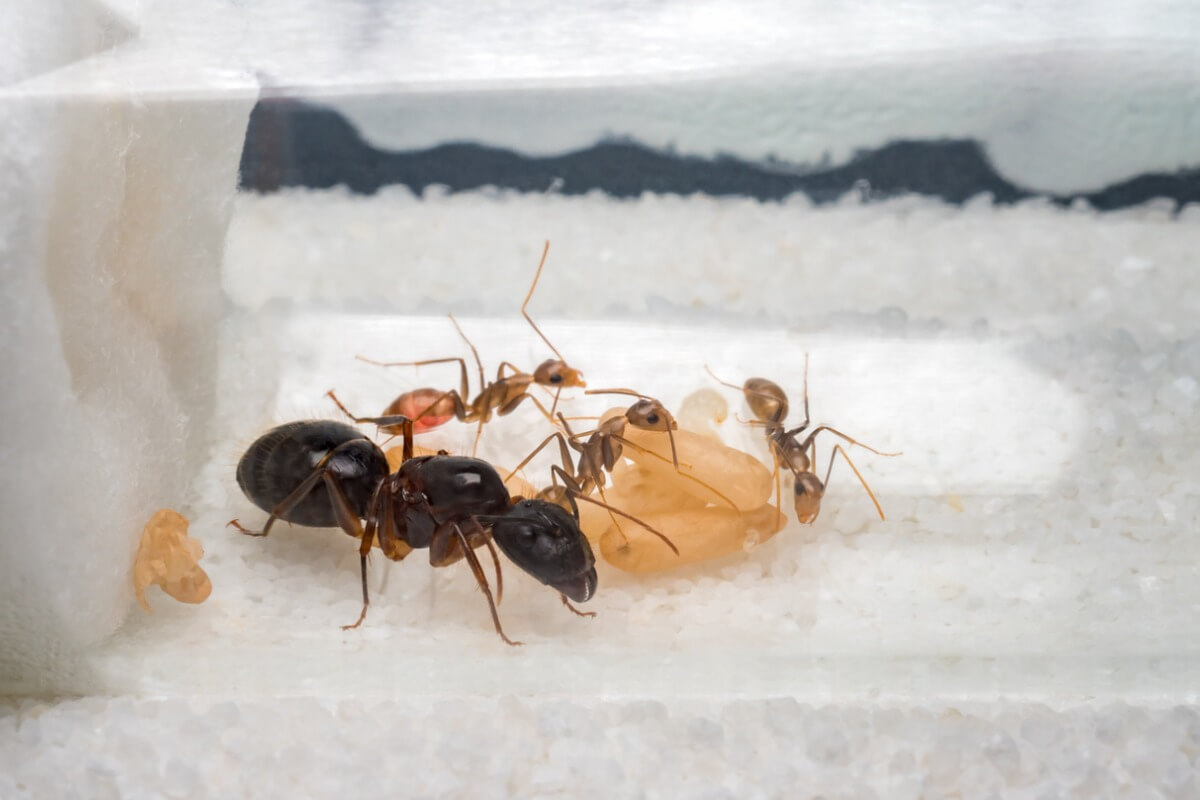
Find out more before your pet goes into hibernation
As you can see, here are some pets that hibernate and others that go into diapause. Anyway, the premise is similar in all these biological strategies: the animal’s metabolism is reduced in colder weather in order to withstand the harsh environment.
It’s very important to differentiate between obligate and facultative hibernators. Ant colonies require a period of dormancy and red-eared sliders benefit from hibernation, but the dangers outweigh the positive aspects in a hamster or hedgehog. Don’t let your pet hibernate unless instructed to do so by a professional.
All cited sources were thoroughly reviewed by our team to ensure their quality, reliability, currency, and validity. The bibliography of this article was considered reliable and of academic or scientific accuracy.
- Pogona vitticeps, ADW. Recogido a 9 de noviembre en https://animaldiversity.org/accounts/Pogona_vitticeps/
- MISCELLANEUS SMALL MAMMAL BEHAVIOUR, Science Direct. Recogido a 9 de noviembre en https://www.sciencedirect.com/science/article/pii/B9781416000099500141
- Is my hamster hibernating or dead, veterinary practice. Recogido a 9 de noviembre en https://www.veterinary-practice.com/article/is-my-hamster-hibernating-or-dead
This text is provided for informational purposes only and does not replace consultation with a professional. If in doubt, consult your specialist.